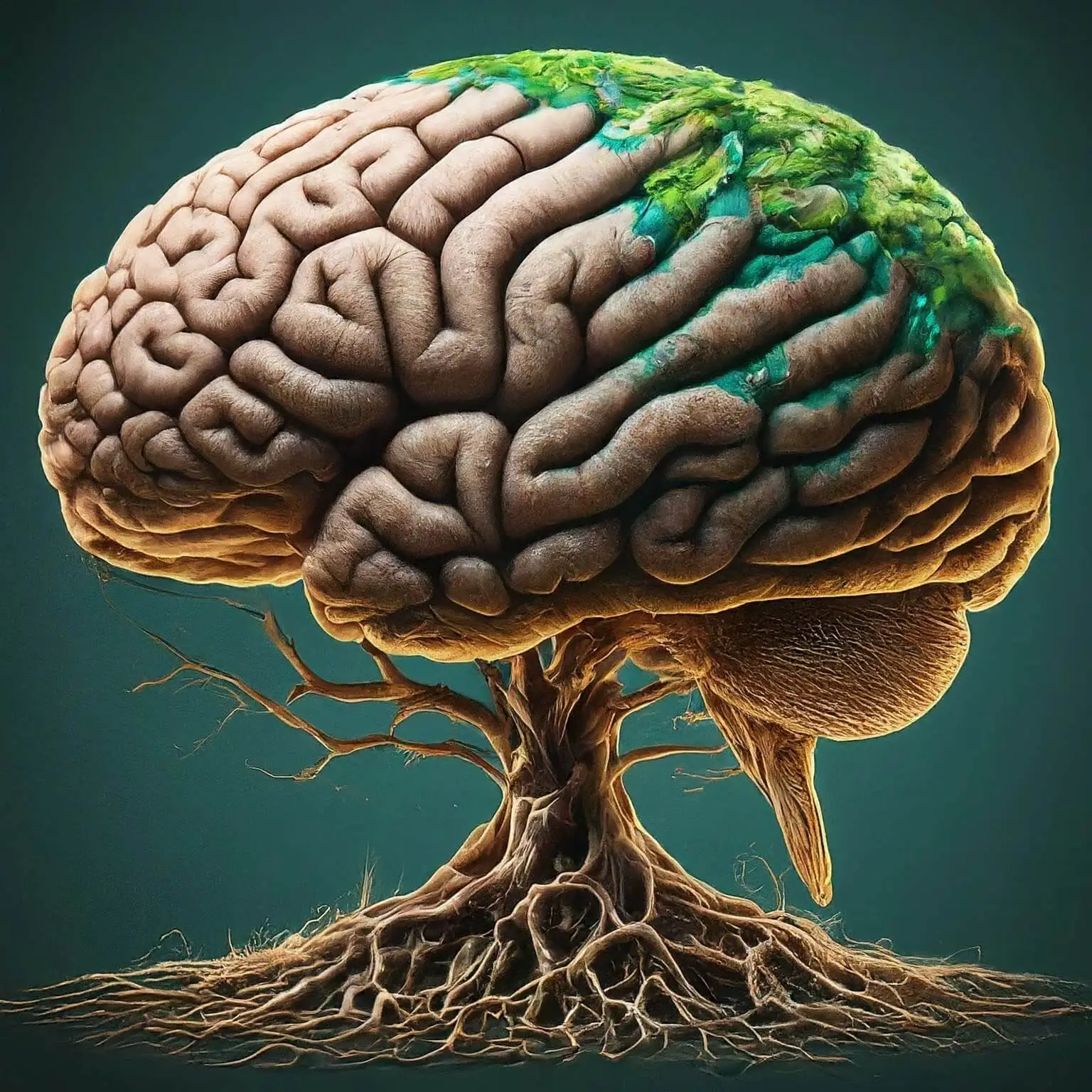Boost Mental Health Through Physical Wellness

Did you know that taking a brisk 30-minute walk can significantly improve your mood and reduce anxiety? This simple fact highlights the powerful connection between our physical and mental well-being. Welcome to a journey of discovery where we’ll explore how nurturing your body can lead to a happier, healthier mind.
In today’s fast-paced world, it’s easy to forget that our minds and bodies are deeply interconnected. This blog post will guide you through the fascinating world of mind-body harmony and show you how physical wellness can be a game-changer for your mental health.
Understanding the Mind-Body Connection
The mind-body connection isn’t just a New Age concept – it’s backed by solid science. This intricate relationship between our physical and mental states has been the subject of numerous studies, revealing how our thoughts and emotions can affect our physical health, and vice versa.
What is the Mind-Body Connection?
The mind-body connection refers to the link between our thoughts, feelings, beliefs, and attitudes, and our physical health. It’s the idea that our mental state can influence our physical well-being, and our physical actions can impact our mental health.
The Science Behind It
Research has shown that this connection is more than just theory. For example:
- A 2018 study published in the journal “Frontiers in Psychiatry” found that regular exercise can reduce symptoms of depression and anxiety.
- Another study from the “Journal of Clinical Psychology” revealed that mindfulness practices like meditation can lower blood pressure and reduce chronic pain.
These findings highlight how physical activities can positively affect our brain chemistry, leading to improved mental health.
The Impact of Exercise on Mental Health
One of the most powerful ways to harness the mind-body connection is through exercise. Let’s explore how physical activity can boost your mental well-being.
Mood Enhancement
Have you ever noticed how you feel after a good workout? That’s not just physical tiredness – it’s often accompanied by a sense of accomplishment and improved mood. This is because exercise triggers the release of endorphins, often called “feel-good” chemicals, in your brain.
Some mood-boosting exercises include:
- Jogging or running
- Dancing
- Swimming
- Cycling
- High-Intensity Interval Training (HIIT)
Stress Reduction
Physical activity is a powerful stress-buster. When you exercise, your body reduces the levels of stress hormones like cortisol and adrenaline. At the same time, it stimulates the production of endorphins, which help alleviate pain and induce feelings of relaxation and optimism.
Here’s a simple comparison of stress levels before and after exercise:
| Time | Average Stress Level (1-10 scale) |
|---|---|
| Before Exercise | 7 |
| Immediately After Exercise | 4 |
| 2 Hours After Exercise | 3 |
Anxiety and Depression Management
Exercise isn’t just for physical fitness – it’s a potent tool for managing anxiety and depression. A landmark study published in the “American Journal of Psychiatry” found that just one hour of exercise a week could prevent 12% of future cases of depression.
For optimal mental health benefits, experts recommend:
- 150 minutes of moderate-intensity exercise per week, or
- 75 minutes of vigorous-intensity exercise per week
Remember, you don’t have to do it all at once. Breaking it up into smaller sessions throughout the week can be just as effective and often more manageable.
Nutrition and Mental Well-being
What we eat doesn’t just affect our waistlines – it has a profound impact on our brain function and mental health. Let’s explore how you can nourish your mind through your diet.
Brain-Boosting Foods
Certain nutrients are essential for optimal brain health. Here’s a list of some key brain-boosting nutrients and where to find them:
- Omega-3 fatty acids: Found in fatty fish, flaxseeds, and walnuts
- Antioxidants: Abundant in berries, dark chocolate, and leafy greens
- B vitamins: Present in whole grains, eggs, and legumes
- Vitamin D: Found in fatty fish, egg yolks, and fortified foods
Incorporating these foods into your diet can help support cognitive function and mood regulation.
The Gut-Brain Axis
Did you know your gut is often called your “second brain”? The gut-brain axis is a bidirectional communication system between your gastrointestinal tract and your central nervous system. This connection means that the health of your gut can significantly influence your mental well-being.
To improve your gut health and, by extension, your mental health:
- Eat a diverse range of foods
- Include fermented foods like yogurt and kefir in your diet
- Consume plenty of fiber-rich foods
- Stay hydrated
- Reduce your intake of processed foods and added sugars
Sleep and Its Effect on Mental Health
Quality sleep is crucial for mental well-being. During sleep, your brain processes emotions, consolidates memories, and recharges for the next day. Chronic sleep deprivation can lead to increased risk of anxiety, depression, and other mental health issues.
Here are some tips for improving your sleep hygiene:
- Stick to a consistent sleep schedule
- Create a relaxing bedtime routine
- Make your bedroom dark, quiet, and cool
- Limit screen time before bed
- Avoid caffeine and heavy meals close to bedtime
Physical activity can also improve sleep quality. Regular exercise can help you fall asleep faster and enjoy deeper, more restorative sleep. Just be sure to finish your workout at least a few hours before bedtime to allow your body time to wind down.
Mindful Movement Practices
Mindful movement practices combine physical activity with mental focus, offering unique benefits for mind-body harmony.
Yoga
Yoga is a powerful tool for mental health, combining physical postures, breathing exercises, and meditation. Its benefits include:
- Reduced stress and anxiety
- Improved mood and emotional regulation
- Enhanced body awareness and mindfulness
- Better sleep quality
For beginners, gentle styles like Hatha or Restorative yoga can be great starting points. As you progress, you might explore more dynamic styles like Vinyasa or Ashtanga.
Tai Chi and Qigong
These ancient Chinese practices involve slow, flowing movements combined with deep breathing and meditation. Benefits include:
- Reduced stress and anxiety
- Improved balance and flexibility
- Enhanced cognitive function
- Better sleep quality
To incorporate these practices into your daily routine:
- Start with short, 10-minute sessions
- Practice at the same time each day to build a habit
- Use online videos or apps for guidance
- Consider joining a local class for proper instruction
The Role of Outdoor Activities in Mental Wellness
Spending time in nature can be a powerful mood booster and stress reliever. The combination of fresh air, natural light, and physical activity can work wonders for your mental health.
Benefits of outdoor activities include:
- Reduced symptoms of anxiety and depression
- Improved concentration and creativity
- Enhanced vitamin D production, which is crucial for mood regulation
- Better sleep quality
Here’s a list of outdoor activities that promote mental well-being:
- Hiking or nature walks
- Gardening
- Beach yoga or meditation
- Outdoor sports (e.g., tennis, frisbee, soccer)
- Bird watching or wildlife photography
- Kayaking or paddleboarding
Try to incorporate at least one outdoor activity into your weekly routine for optimal benefits.
Creating a Balanced Lifestyle for Optimal Mental Health
Achieving mind-body harmony requires a balanced approach to physical wellness. Here’s how you can create a lifestyle that supports both your physical and mental health:
- Prioritize regular exercise: Aim for at least 150 minutes of moderate-intensity exercise per week.
- Eat a nutrient-rich diet: Focus on whole foods, including plenty of fruits, vegetables, lean proteins, and healthy fats.
- Get adequate sleep: Strive for 7-9 hours of quality sleep each night.
- Practice mindfulness: Incorporate meditation or mindful movement practices into your daily routine.
- Spend time outdoors: Make an effort to connect with nature regularly.
- Maintain social connections: Engage in activities with friends and family to support emotional well-being.
Here’s a sample weekly schedule incorporating various physical wellness activities:
| Day | Morning | Afternoon | Evening |
|---|---|---|---|
| Monday | 30-min jog | 10-min meditation | Healthy meal prep |
| Tuesday | Yoga class | – | Nature walk |
| Wednesday | Strength training | – | 10-min mindfulness |
| Thursday | 30-min swim | – | Social dinner with friends |
| Friday | 10-min stretching | Outdoor lunch break | Relaxation time |
| Saturday | Hiking | – | Meal planning for next week |
| Sunday | Tai Chi practice | Gardening | Early bedtime |
Overcoming Barriers to Physical Wellness
While the benefits of physical wellness are clear, many people face obstacles in maintaining a healthy lifestyle. Here are some common barriers and strategies to overcome them:
- Lack of time
- Break exercise into shorter, more manageable sessions
- Combine activities (e.g., walking meetings, social fitness classes)
2. Low motivation
- Set small, achievable goals
- Find an accountability partner or join a support group
3. Limited resources
- Explore free online workout videos or apps
- Use bodyweight exercises that don’t require equipment
4. Physical limitations
- Consult with a healthcare provider for safe exercise options
- Focus on activities you can do, rather than those you can’t
5. Stress or mental health issues
- Start with gentle activities like walking or stretching
- Seek support from a mental health professional if needed
Remember, progress is more important than perfection. Start small and gradually build up your physical wellness routine.
Conclusion
The journey to mind-body harmony through physical wellness is a rewarding one. By nurturing your body through exercise, nutrition, sleep, and mindful practices, you’re also taking care of your mental health. Remember that small, consistent steps can lead to significant improvements in your overall well-being.
We encourage you to start incorporating some of these strategies into your daily life. Whether it’s a short walk, a nutritious meal, or a few minutes of meditation, every positive action contributes to your mental and physical health.
Additional Resources
To support your journey towards mind-body harmony, here are some helpful resources:
- Books:
- “The Body Keeps the Score” by Bessel van der Kolk
- “How to Do the Work” by Dr. Nicole LePera
- Websites:
- National Alliance on Mental Illness (NAMI): www.nami.org
- Mind Body Green: www.mindbodygreen.com
- Apps:
- Headspace (for meditation and mindfulness)
- MyFitnessPal (for nutrition tracking)
- Strava (for outdoor activity tracking)
Remember, your journey to better mental health through physical wellness is unique to you. Be patient with yourself, celebrate small victories, and don’t hesitate to seek professional help if needed. Here’s to your health and happiness!



